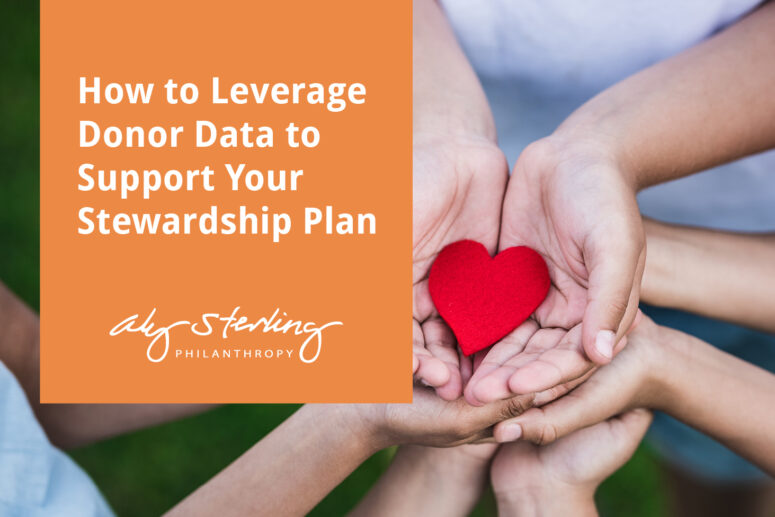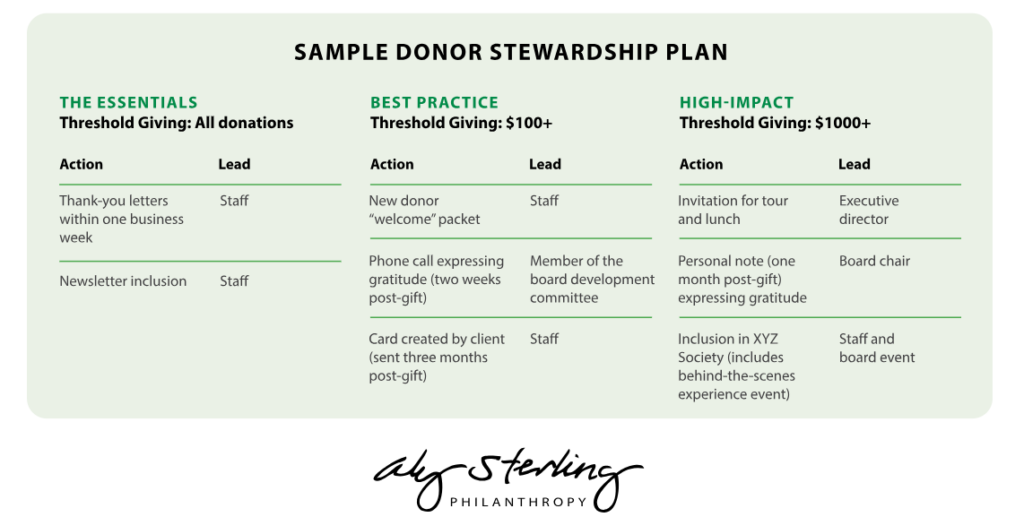
Your nonprofit works hard to familiarize new people with your mission and acquire them as donors, from leading meaningful marketing campaigns to leveraging connections through your existing supporter base. But once you secure that first gift, how do you cement them as recurring supporters you can rely on year-round?
The path from new donor to loyal supporter can be a tricky one to navigate, especially if your nonprofit is struggling with low retention rates. To create an informed approach to donor stewardship, you’ll need to pull from data insights.
In this guide, we’ll cover how you can leverage data analytics to support your donor stewardship strategy and maximize giving. Backed by a pool of recurring givers, you’ll be able to establish a predictable donation pipeline that you can count on.
Identify relevant engagement opportunities
Your first-time donors likely won’t have an in-depth familiarity with your cause, meaning you must introduce them to your mission and show why it’s worth their continuous involvement. One of the best ways to connect new donors to your mission is by creating relevant engagement opportunities.
While it’s a safe bet that your first-time donors have a general affinity for your cause, their passion can likely be boiled down into more specific interest areas. For example, an animal welfare organization might have donors who are strongly interested in their adoption efforts while other donors are most passionate about their goal to end cosmetic animal testing.
With data insights you’ve gathered from your supporters so far, you can offer opportunities beyond donating that relate to their interests and lead to stronger connections with your cause. For example, you might invite them to:
- Volunteer at your facility or during your next event or program
- Sign a petition to advance your advocacy campaign
- Attend a topic-focused luncheon
- Participate in a day-in-the-life program that allows donors to shadow members of your team
- Join your donor club with accompanying community-building events
Map out your different engagement opportunities in a donor stewardship matrix. A donor stewardship matrix outlines the different outreach strategies you’ll use to connect with supporters, when you’ll use them, and the point people responsible for executing each action.

For example, you might save your more high-impact stewardship tactics, like setting up a meeting with one of your board members, for gifts amounting to $1,000 or more.
If you’re not sure how to make a custom stewardship plan that makes sense for your nonprofit, consider working with an expert fundraising consultant. Aly Sterling Philanthropy’s guide to fundraising consultants explains that a consultant can identify gaps in your current stewardship approach and introduce fresh strategies to build stronger donor relationships. Do your research to find a partner that won’t work for you but with you to boost your retention rate.
Tailor your communication strategy
Along with tailoring engagement opportunities to your donors’ interests, you’ll also want to personalize all of your communications. Whether you’re sending out emails, texts, or direct mail pieces, adding a custom touch to your donor communications helps supporters feel valued and makes them more eager to read your messaging.
However, your nonprofit doesn’t have unlimited time and resources to individually message each of your supporters. Segmenting your audience makes it easier to send personalized notes to a large number of donors. This process involves dividing your contact list into subgroups based on shared characteristics.
Kwala’s guide to donor communications recommends referencing your donor data to segment supporters into the following categories:
- Demographics: Details like location and age can help inform your supporters’ communication preferences and interests.
- Engagement level: Factors such as how often your donors attend your fundraising events or community-building programs and whether they volunteer are helpful to keep in mind as you send out relevant engagement opportunities.
- Donation amount: Conversations with a small donor versus a potential major donor will have some key differences, such as the level of detail you include when discussing your progress and needs. Plus, understanding your donors’ average giving amount can help you understand whether they have the financial capacity to upgrade their giving amount to the mid-level or major donor tier.
- Donation recency: Recency enables you to pinpoint the best points in your relationship-building to ask for an additional gift.
- Donation frequency: Look at how often your supporters give to your cause, such as on a monthly, quarterly, or annual basis. Knowing how often supporters donate provides insight into how often you should communicate with them about your needs.
As you send out communications, track relevant metrics like open and click-through rates with the help of your marketing platform. This way, you can make adjustments in your communication strategy as needed so you can better support your stewardship and fundraising goals.
Make compelling donation appeals
After establishing a strong relationship, you’re ready to make an appeal. However, you shouldn’t ask your donors for just any amount; your donation ask should be tailored specifically to each donor’s financial capacity and motivation to give.
This guidance is especially important when it comes to securing major donations during the year or as part of major campaigns like a capital campaign. For example, let’s say you’re hoping to steward some of your mid-level donors to the major giving tier. Identify your top major donor prospects among your existing donor pool by looking at the following data:
- Wealth indicators like business affiliations, real estate ownership, and political giving.
- Philanthropic indicators like past donations to your organization, event attendance, history of volunteering, or advocacy campaign participation.
Once you’ve identified qualified prospects, use this research and the information you’ve learned through your stewardship activities to pose a compelling, personalized ask. Make your request specific, express urgency, and explain how receiving this donation amount will push your mission forward.
It’s best to start these asks as in-person conversations where you can get to know the donor and ascertain their interest in your mission and how you can help them reach their philanthropy goals.
Keep in mind that not all of your donors will say “yes” to your ask. It’s important not to be discouraged when this occurs. Instead, figure out how you can strengthen the donor’s connection to your mission and turn this “no” into a “maybe” or “yes” in the future. For example, you might have to change up your stewardship activities or your communication style for this individual.
Wrapping Up
A robust donor stewardship strategy can help your nonprofit maximize giving, increase retention, and advance your nonprofit in a number of ways. To make your stewardship strategy as effective as possible, use donor data to guide your approach and decision-making. Remember that you can always partner with a nonprofit consultant to build a winning stewardship strategy that will benefit your nonprofit for years to come.
